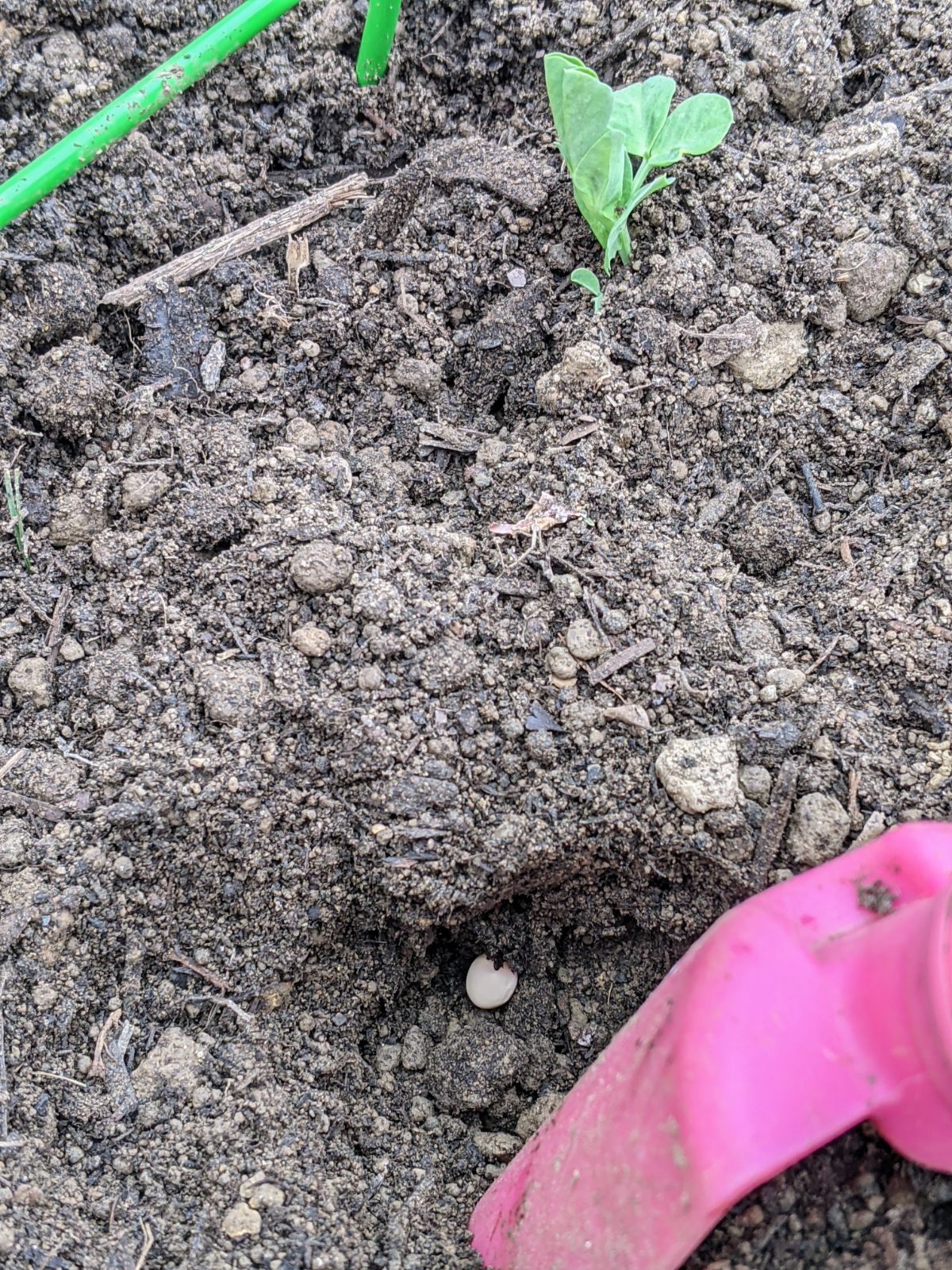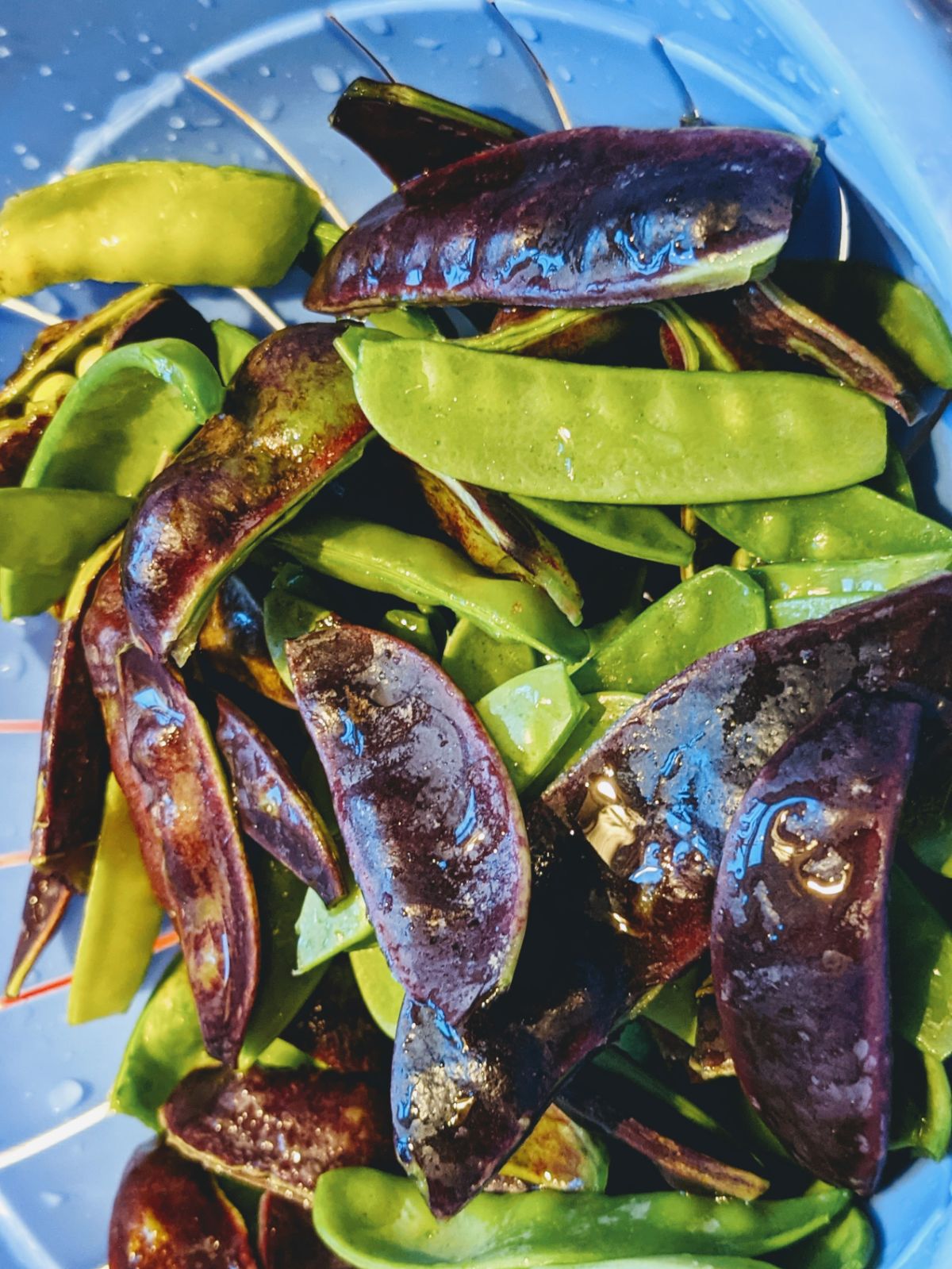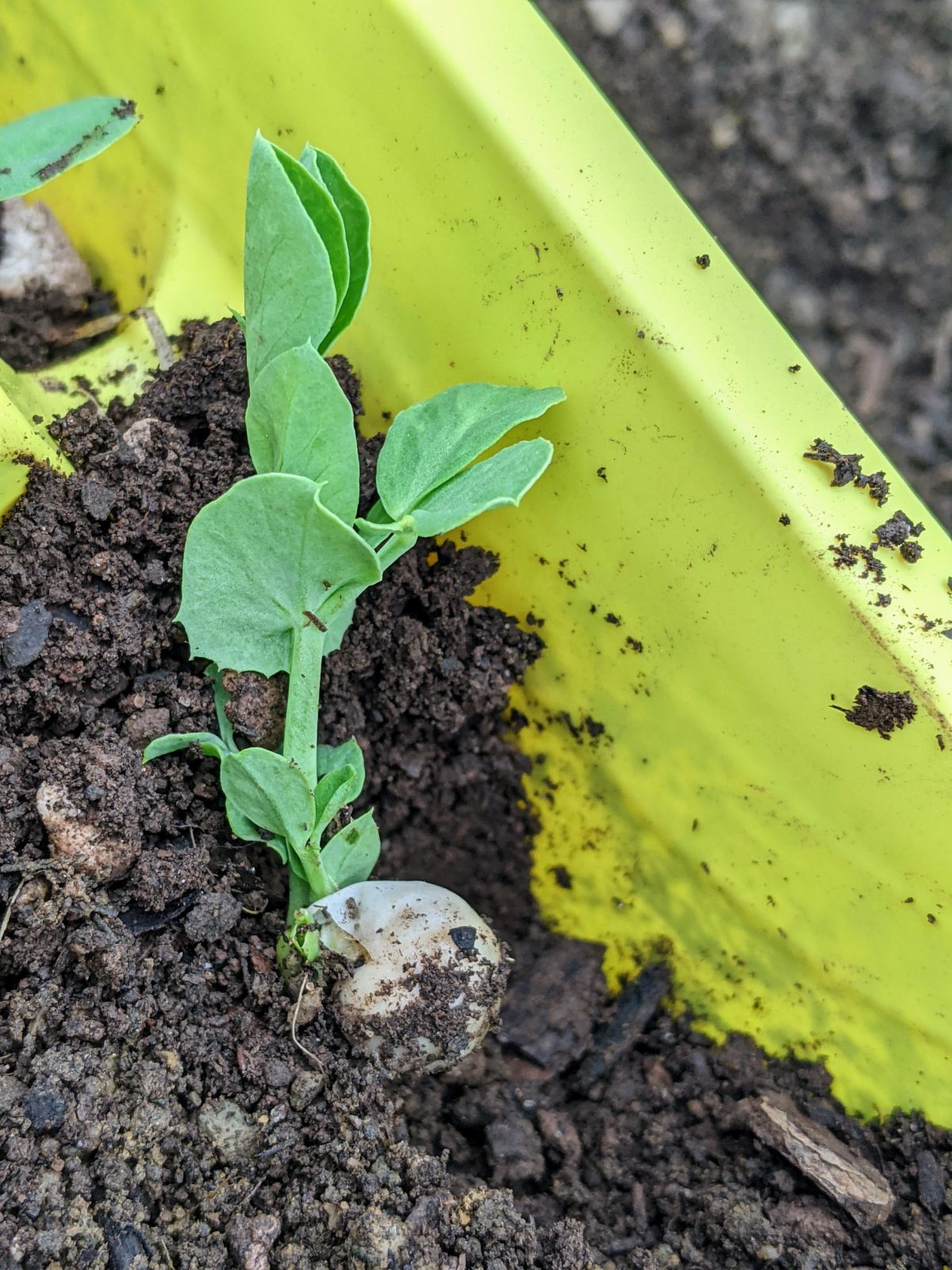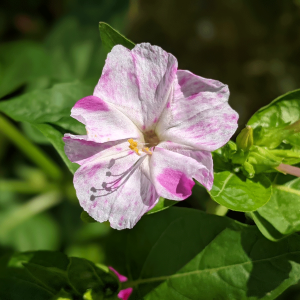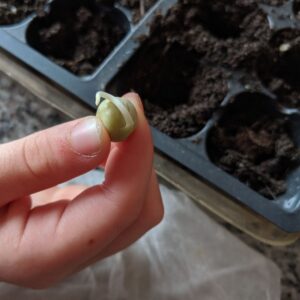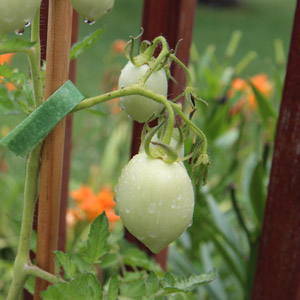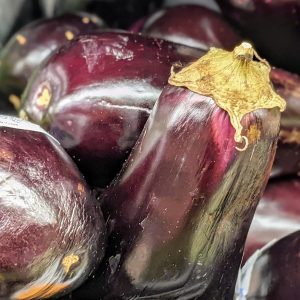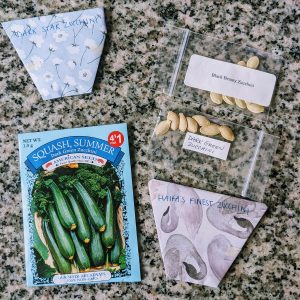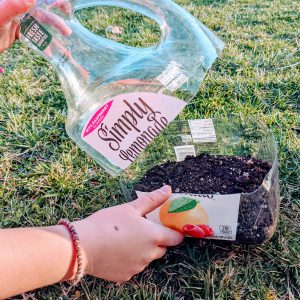Growing Snow Peas from Seed | Edible Pods!
Whether you prefer salads or stir fry dishes, snow peas taste great cooked or raw! Growing snow peas is easy no matter how long you’ve been gardening. Discover some helpful tips about how to grow snow peas in your garden or raised bed and get them in the ground today!
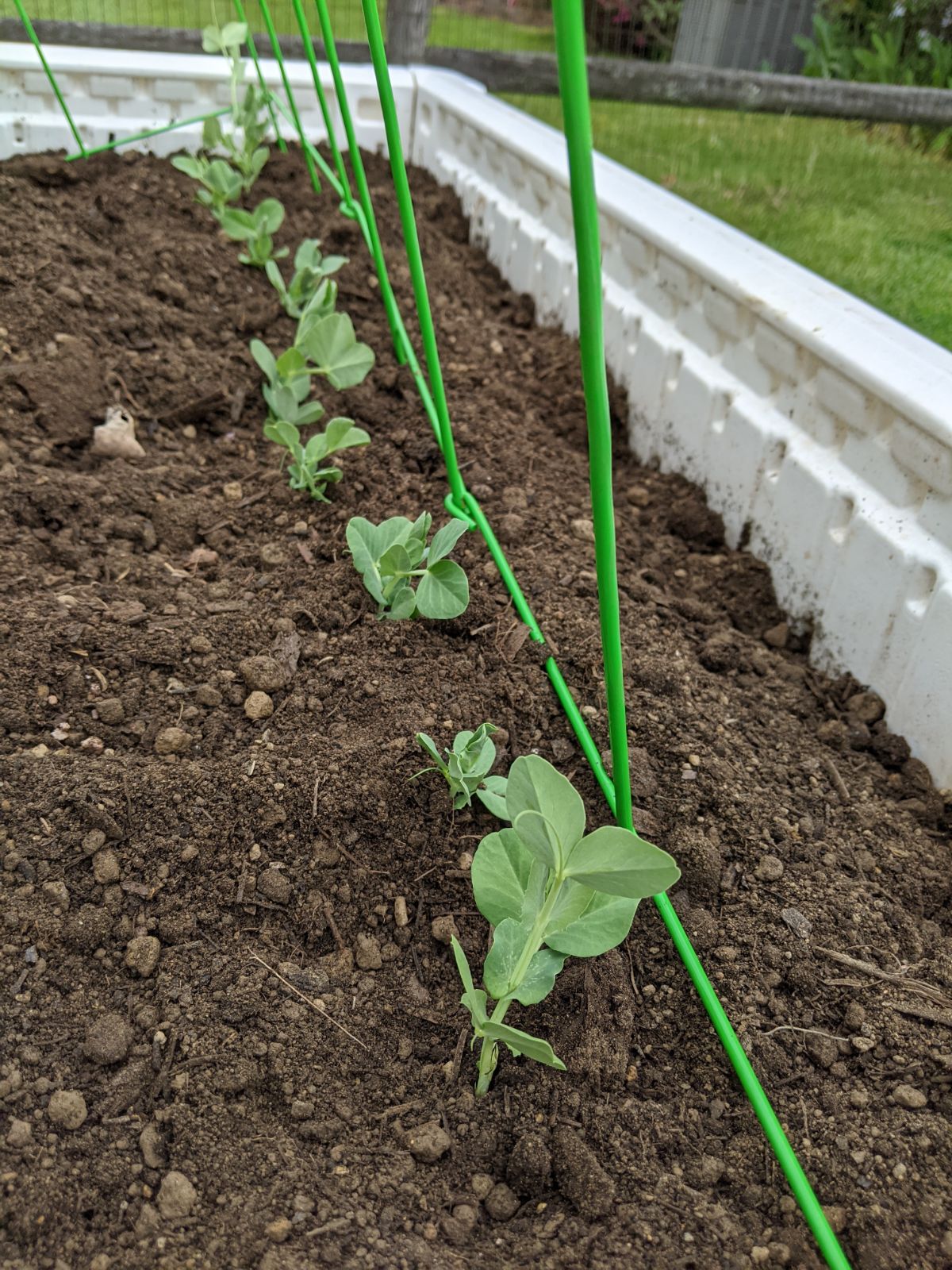
Growing snow pea plants in the home garden is easy and very rewarding. Even if it’s your first time gardening, you can definitely handle this plant!
Planting Snow Peas from Seed
Remember to plant your snow peas early in the season before the threat of frost is done. This plant loves the cooler weather and won’t be as productive once the heat of summer is upon us.
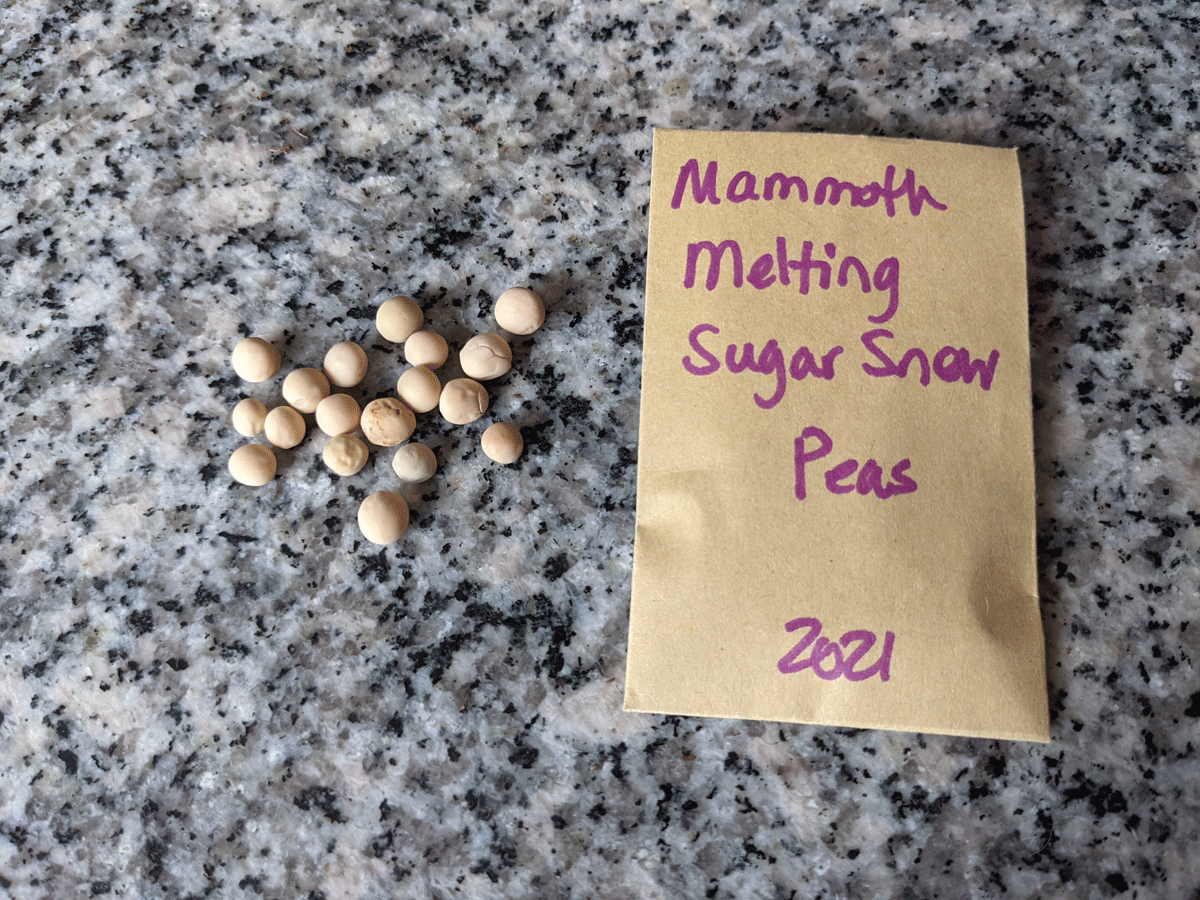
They are larger than traditional snap pea seeds.
Where to Get Snow Pea Seeds
Our family loved the snow peas so much that I started collecting different kinds of seeds to try this growing season. I bought some from seed shops and and swapped for others.
So far I have tried Oregon snow peas from Little Shop of Seeds (a beloved seed shop that is sadly retiring!) and a bulk bag of snow peas from Agway.
I received Beauregarde Purple Snow Peas in a swap from one of my wonderful gardening friends on Instagram. We were really excited to grow purple snow peas!
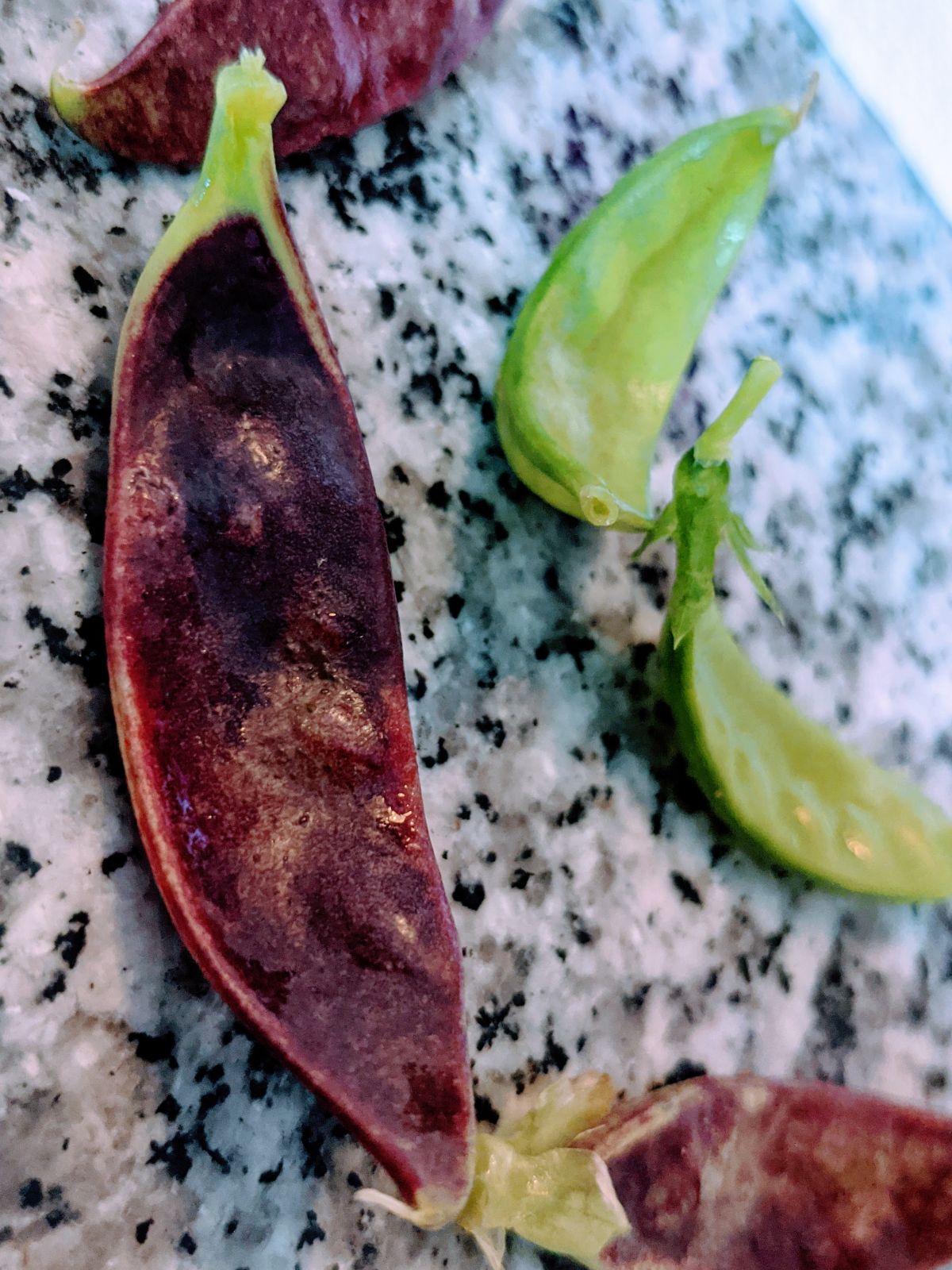
You can also find snow pea seeds for sale online at your favorite seed retailers. For convenience, you can also get them at Walmart or Amazon.
Our website features affiliate links to products that we personally believe in. If you make a purchase from a link on our site, we may earn a small commission at no cost to you. Thank you! This helps our girls chase their garden dreams! Thanks for your support. (View full affiliate disclaimer at the end of the page.)
How to Grow Snow Peas
It’s easy to grow snow peas once you discover how! In most cases, you can begin your snow peas planting in the early spring, before the last frost and more than likely once you can work the soil.
You may find it helpful to check out some Snow Pea Planting Companions to make the most of your gardening spaces. Companion planting can improve growing conditions, pest management, and yield for either or both crops.
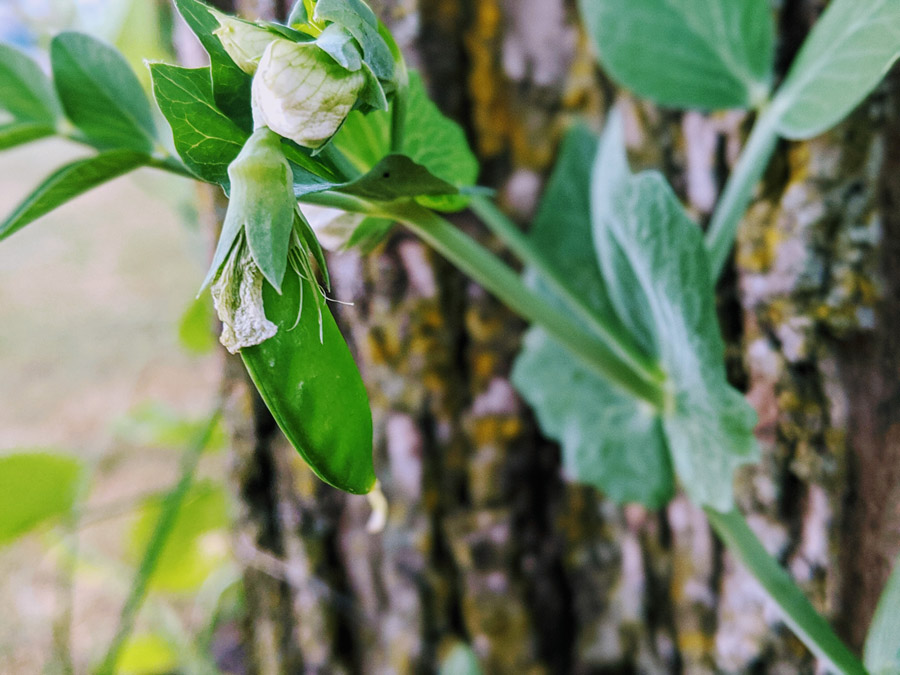
How to Direct Sow Snow Peas
Planting snow peas directly outside in the early spring may be the best bet. You get to skip over the hardening off and get a jump start on your garden!
I planted a bunch of the Agway snow peas outside in a grow bag in late March. They are still relatively short, but bushy and healthy!
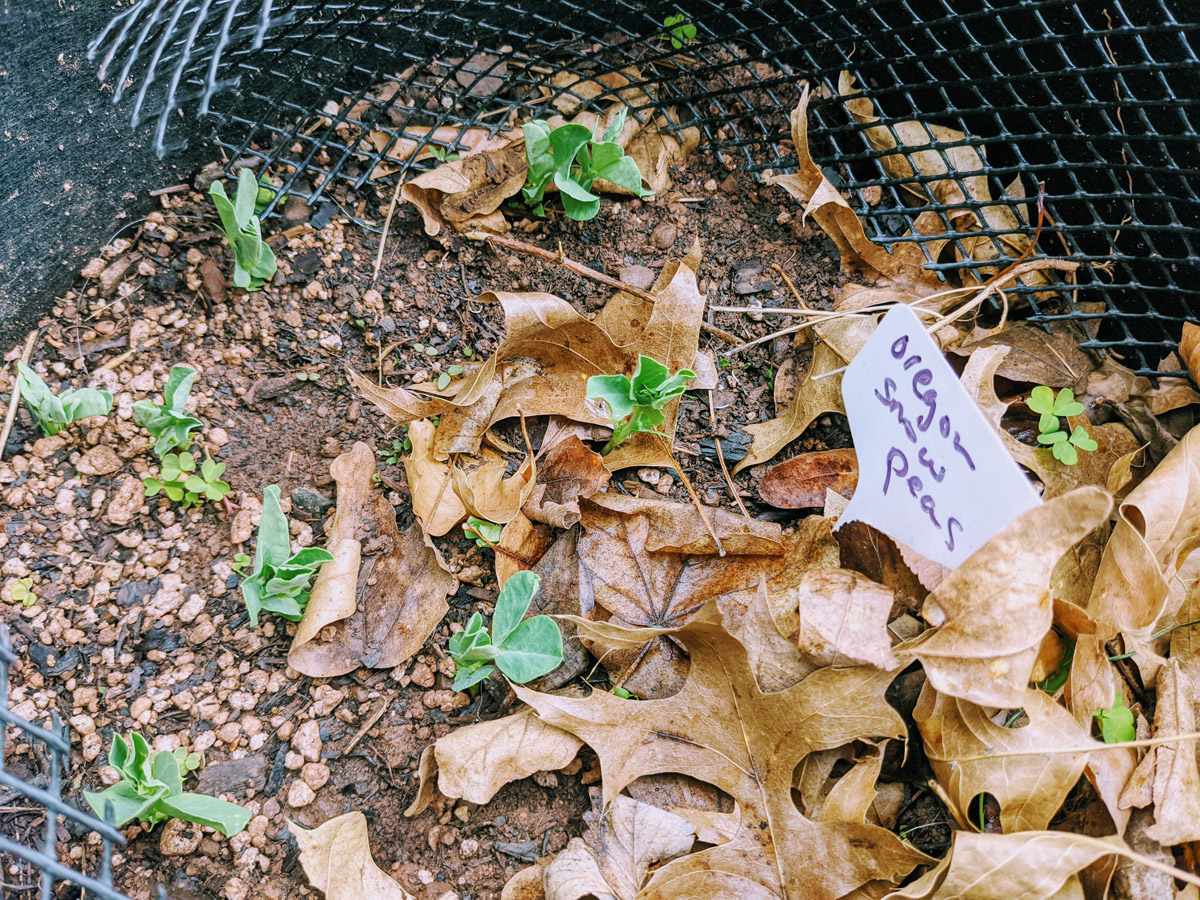
Try these steps when planting snow peas outside.
- Choose a location where you would like to grow your snow peas.
- Dig a small hole and plant one or two snow pea seeds one to one and a half inches deep. (Space them apart about two inches to start.)
- Water the seeds well and check them daily.
- Consider placing a wire wastebasket or other cloche over top of your seeds or young snow pea seedlings to keep them safe from squirrels and other pests.
One year I had my snow peas growing up trees in our yard. I tied some fishing line onto the trunk so they could climb easily.
This was great, except the darn squirrels went around the tree and dug up all my snow peas seeds and left the plants for dead!
(If you have squirrel problems, too, you may want to check out my post about squirrels and blood meal in the garden.)
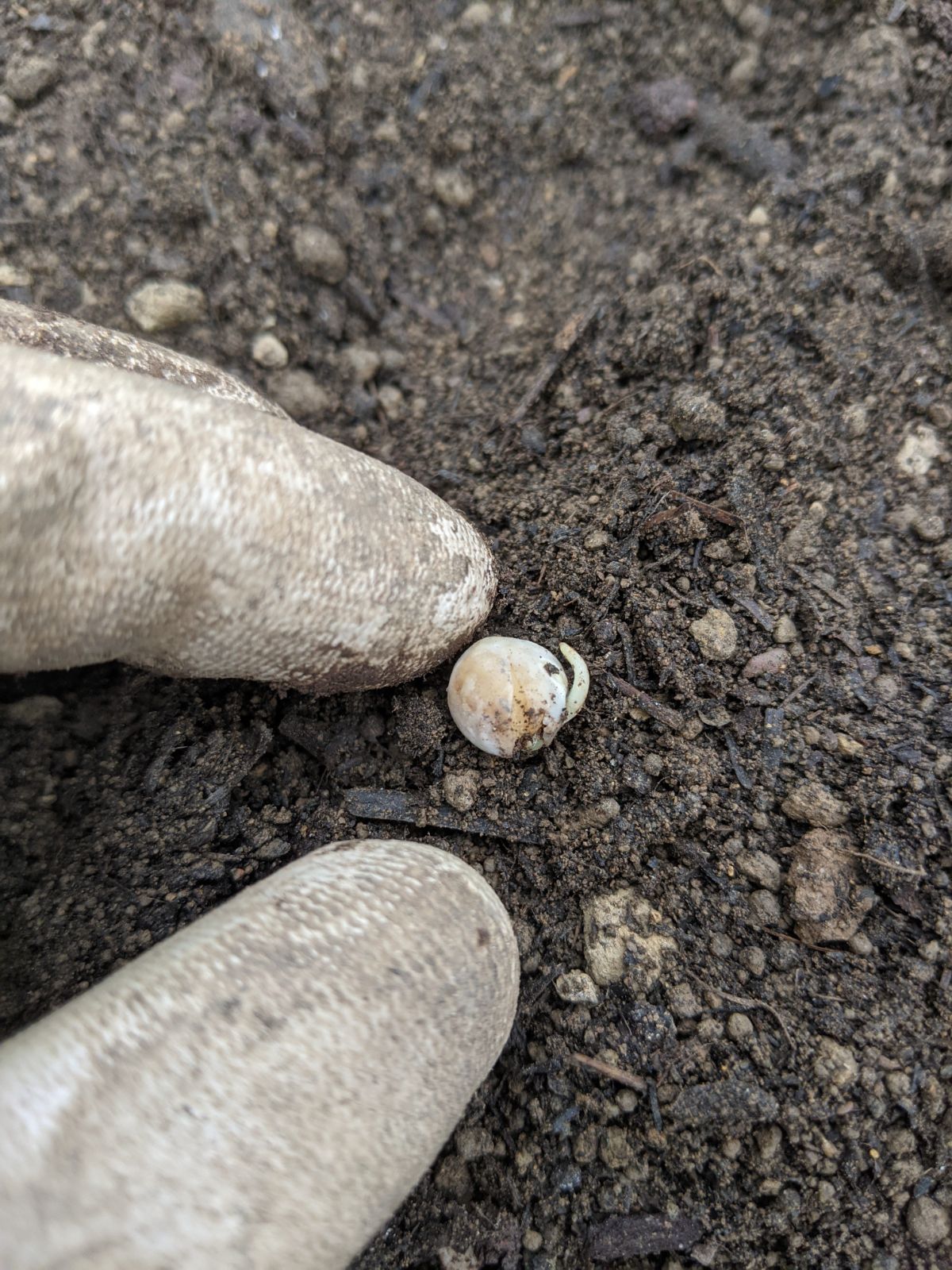
Starting Snow Pea Seeds Indoors
You may also wish to try planting your snow pea seeds indoors. This gives a little added protection from garden pests like squirrels.
Snow peas germinate readily and grow well in egg cartons or seed cell packs until it’s time to pot up.
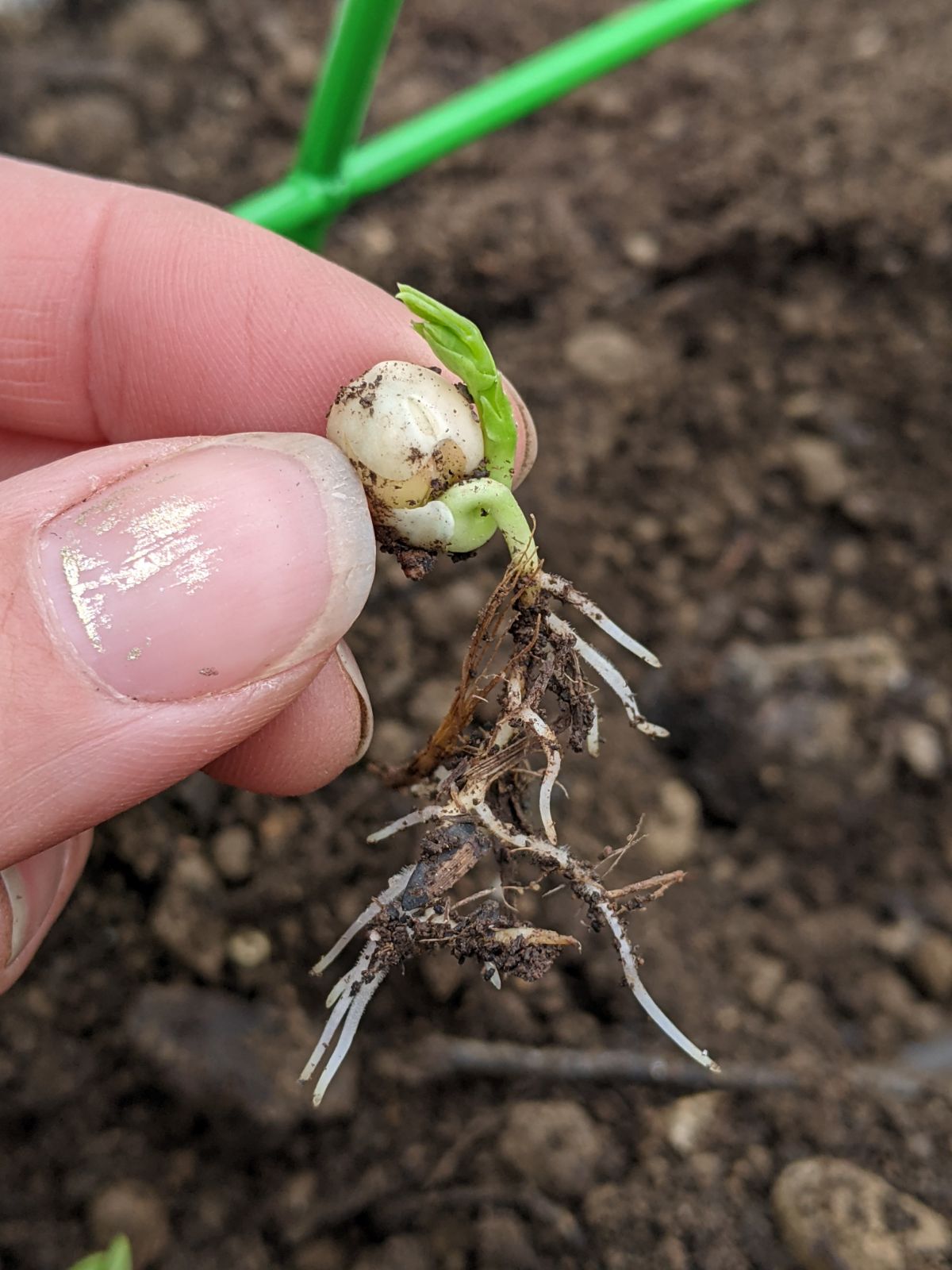
Try these tips to for growing snow pea seeds indoors:
- Fill an empty egg carton or seed starting tray with potting soil.
- Place two snow pea seeds per cell about one inch deep if possible.
- Label the cells where you planted snow peas.
- Water thoroughly.
- Place your plants under grow lights while inside so they don’t get leggy. Even though they’re climbers, you want them to be strong and robust!
- Begin hardening off your snow pea plants as soon as temperatures allow. You can get snow pea seedlings established outside long before tender crops like tomatoes and beans.
- Once sufficiently hardened off, transplant snow peas outside with a trellis, deck railing, or a fence to climb.
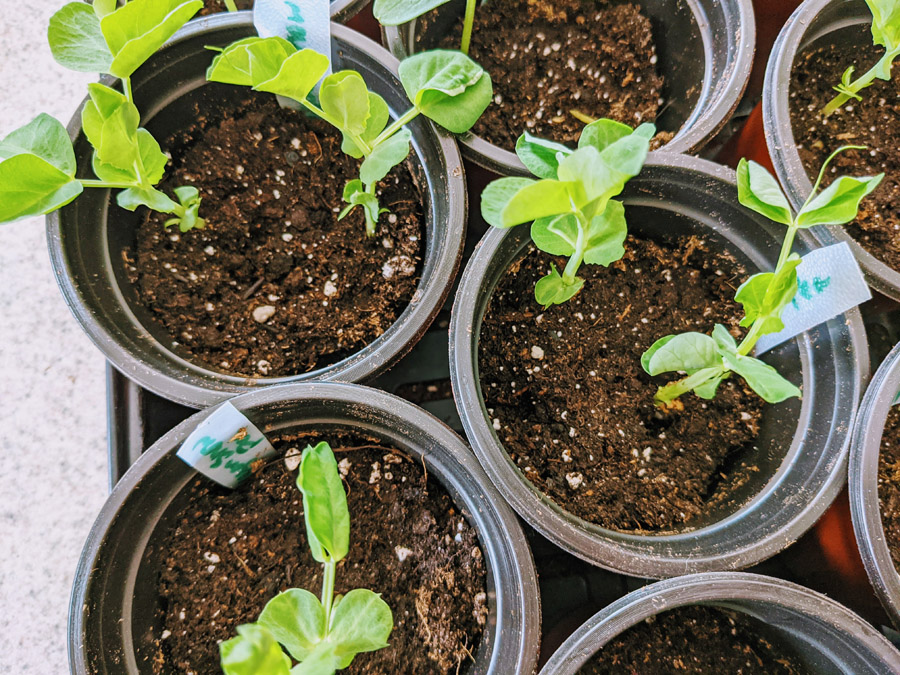
Caring for Snow Peas Seedlings
Snow pea seedlings are pretty easy to grow and rather forgiving.
Follow these tips for snow pea care:
- Watering – Water snow pea seedlings as needed, without allowing the soil to dry between watering.
- Potting Up Snow Peas – Move snow peas seedlings to their own pots when they are several inches tall.
- Help Them Climb – Take note of their little tendrils as they grow. Try to avoid letting snow peas latch onto other plants, which could be problematic.
- Transplant – For seeds started indoors, harden off first and then transplant the seedlings outdoors.
- Protect – When snow peas are young, protect the seedlings and tender roots with a cloche, wire wastebasket, or other protective covering to keep squirrels and other critters away.
You’ll likely be surprised to soon see the first snow pea flowers in bloom! These beauties grow fast and you’ll want to pick frequently to encourage greater yields.
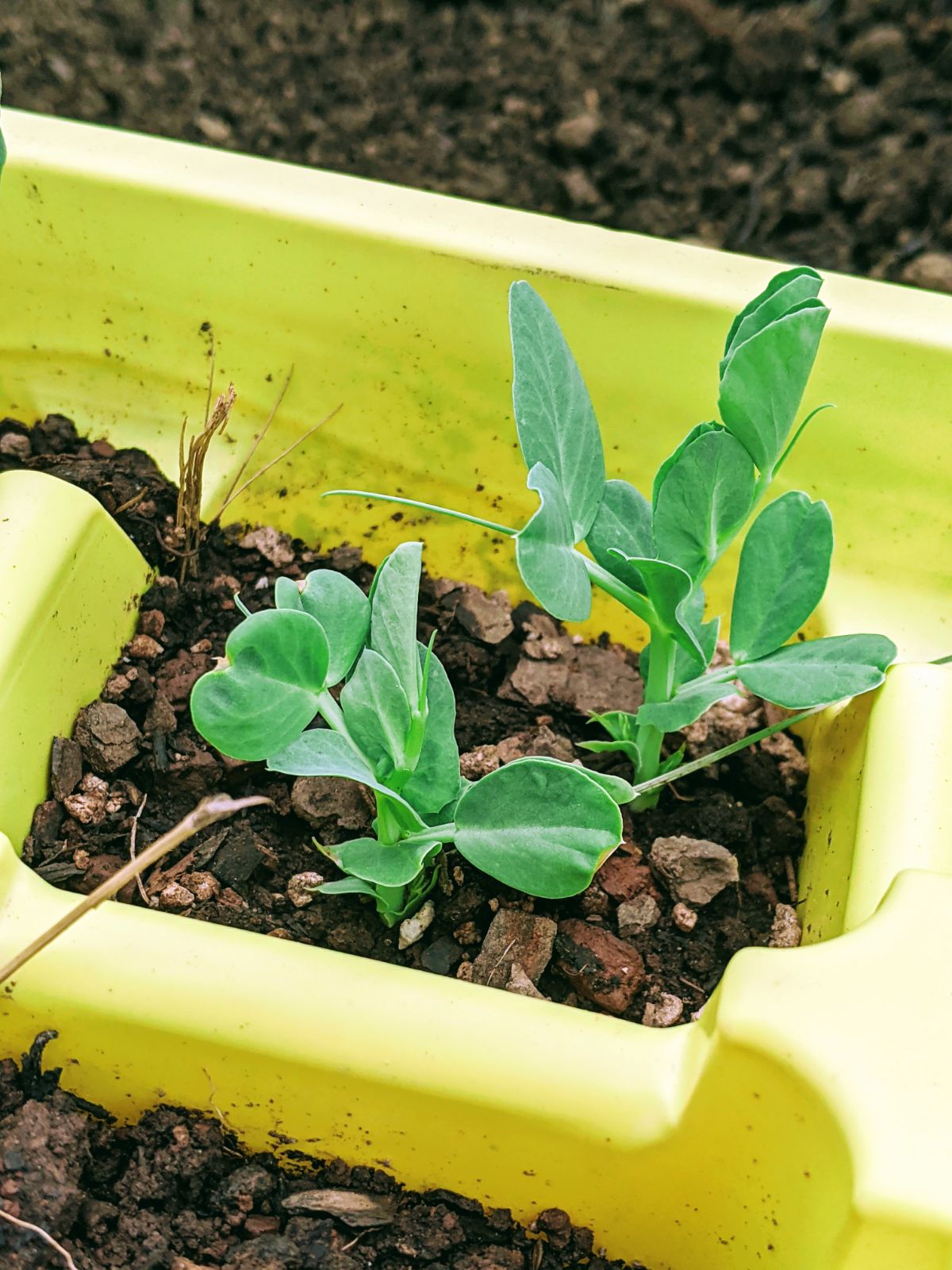
FAQ
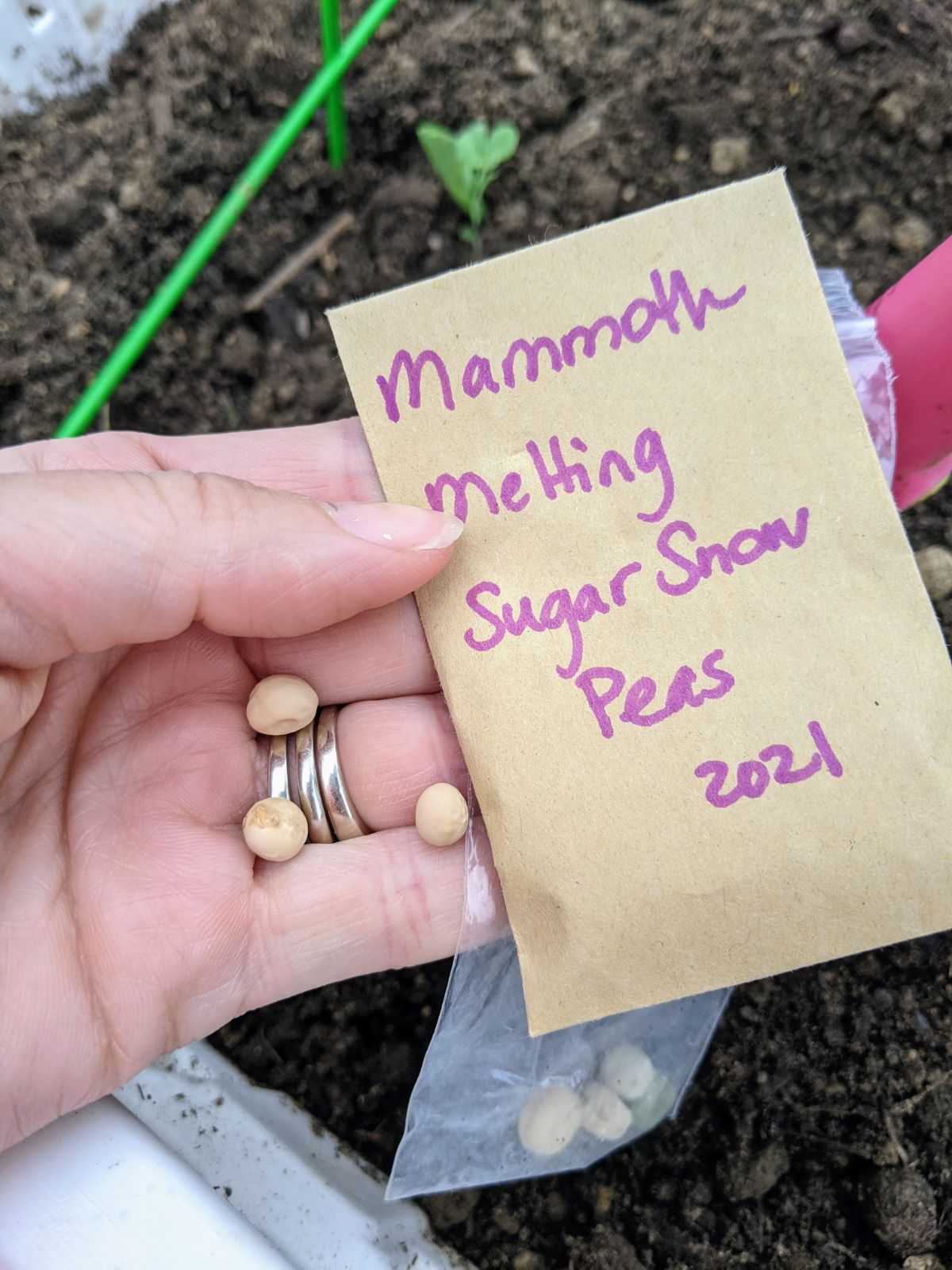
Benefits of Planting Snow Peas
Snow peas are one of my very favorite vegetables to grow, for so many reasons!
- Quick, Easy Germination: Snow pea seeds germinate quickly and readily.
- Kid-Friendly Veggie: My picky-eater kids liked these last year! Fingers crossed for this year.
- Space-Saving: Growing vertically is the way to go when your garden space is limited!
- Culinary Versatility: You can enjoy snow peas fresh off the plant, in a salad, a stir-fry, or on the side of your favorite meal. Their edible pod makes snow peas especially versatile in the kitchen!
- Delicious: Snow peas offer a mildly sweet flavor that pairs well just as well with proteins like beef or chicken as it does in a crisp, fresh salad.
- Succession Planting: After the hot summer wears down your early snow pea crop, you can begin a new wave of plants to take you through the fall. Check your gardening zone for phase 2 planting dates.
Growing snow pea plants in the garden is a worthwhile and rewarding experience for adults and kids alike. If you’re reading this now, you should definitely grow some!
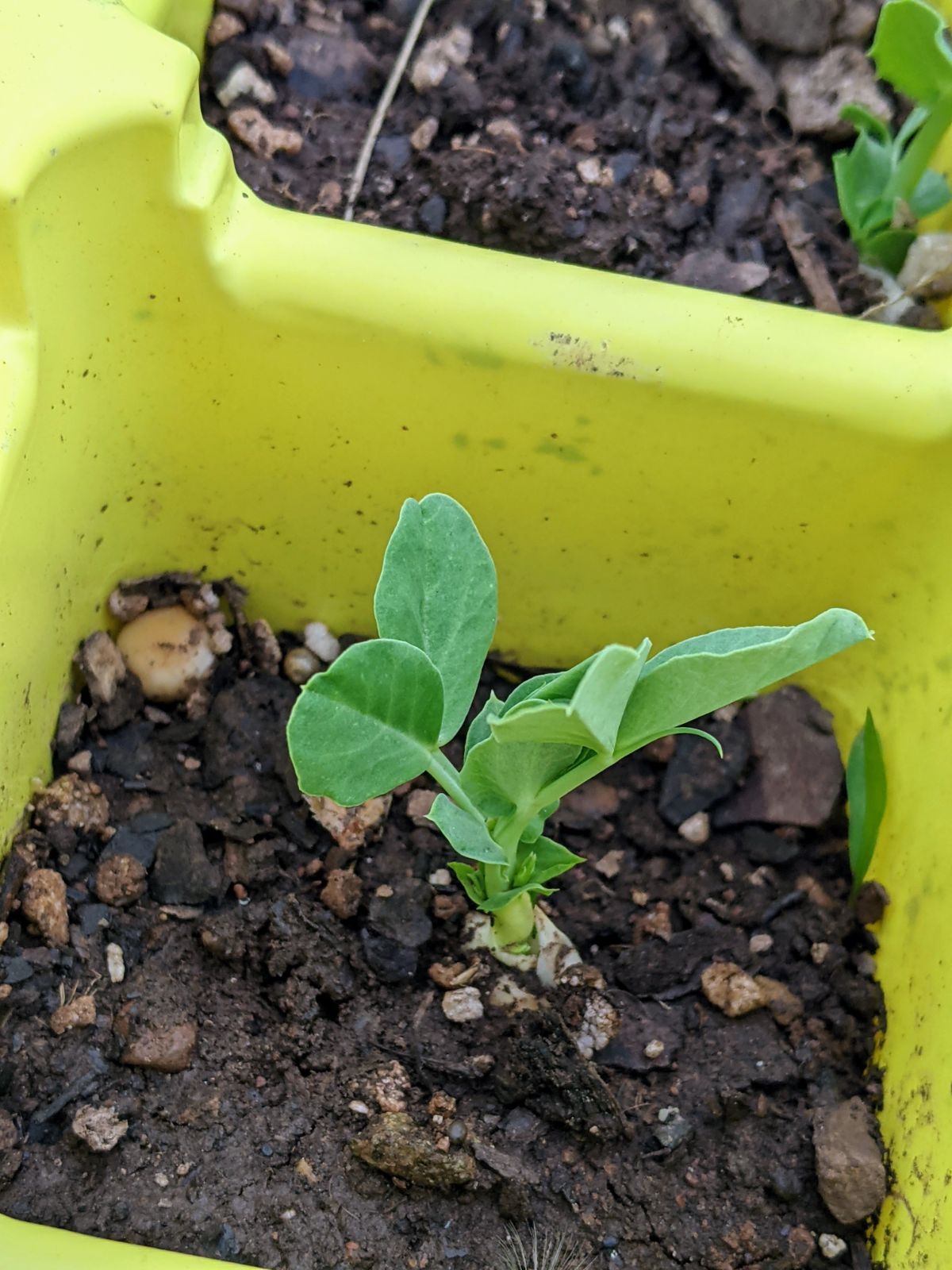
Growing Snow Peas in the Backyard
Planting and caring for snow peas is easy and the crop brings so much to the dinner table. Enjoy this wonderful, delicious, and easy-to-grow veggie in your garden!
Did you ever notice if you have a darling plant in your garden each year? The best producer or the prettiest flowers or one that just simply surprised you? Snow peas continue to be one of my very favorite experiences of all the crops we grow.
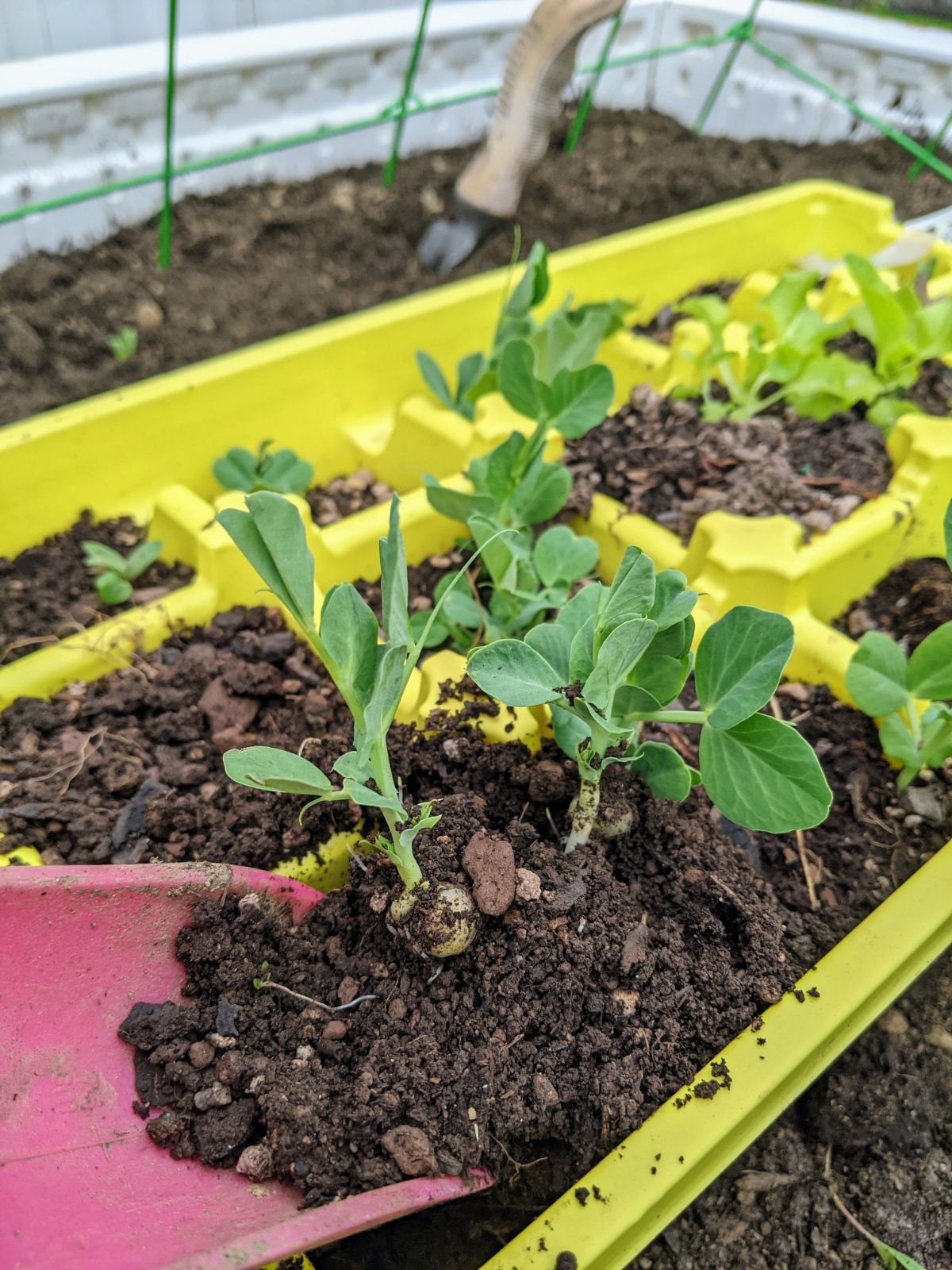
2020 was the first year I tried growing snow peas and oh, how I loved seeing my youngest daughter excited to snack on a snow pea pod fresh from the plant.
I loved how excited my oldest daughter was to see new snow pea flowers blossoming each day!
And, I loved the delicate sweetness of these tender and mild vegetables. How great they taste raw, steamed, stir-fried, or sautéed.
Plant as many snow pea seeds as you think you’ll need to feed your family. Gardening guidance online shares two very diverse perspectives. Some recommend planting 3 to 5 snow pea plants per person whereas others recommend 15 to 25 snow pea plants per person.
What a difference!
Our yard isn’t big enough to grow all the proper numbers of plants advised online, so I’m just going to do the best I can with the space I have. We will probably grow 20 to 30 snow pea plants total, so hopefully that will be enough!
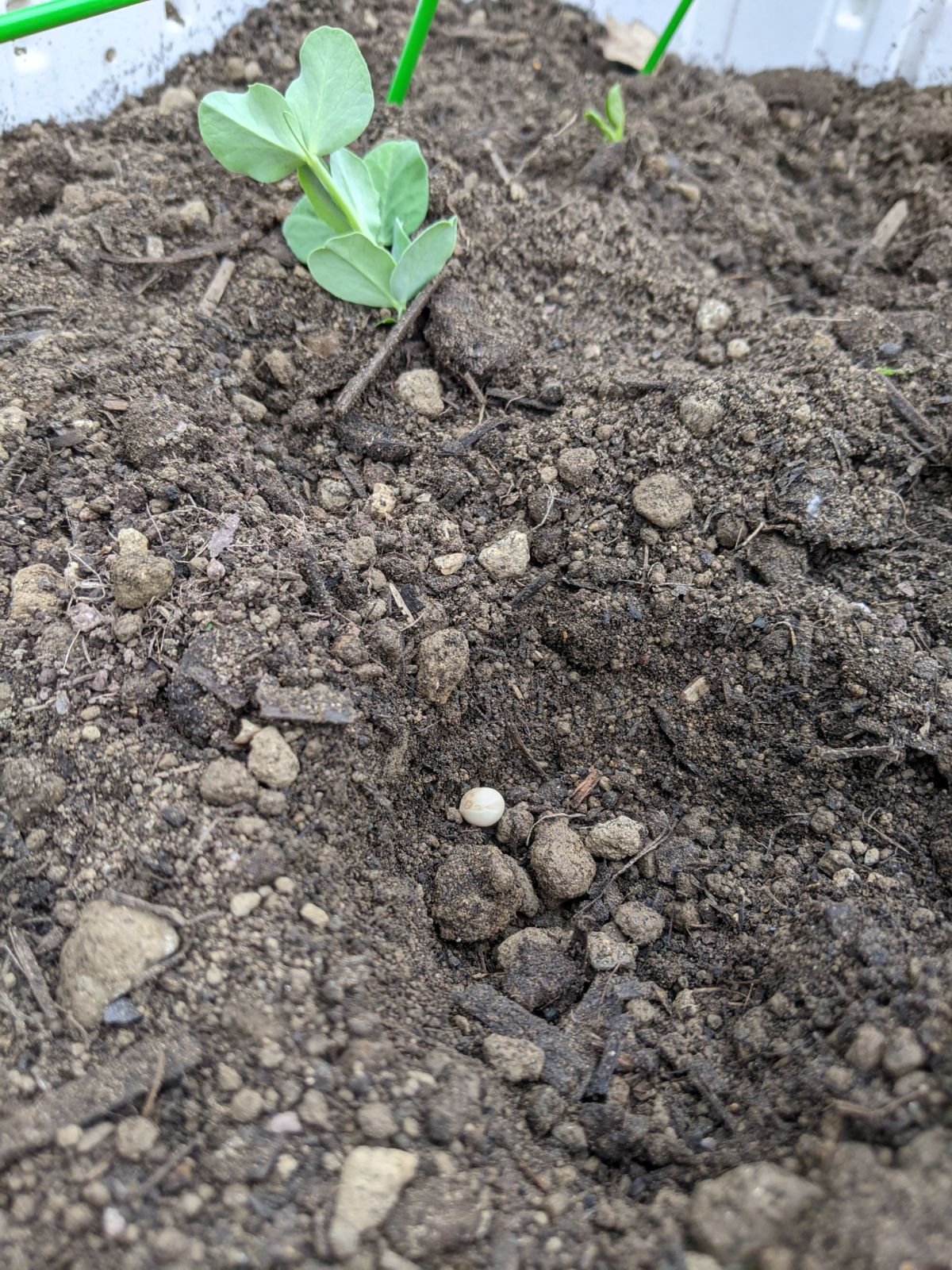
Are you planting any snow pea plants this year? Let’s chat in the comments! xo
Happy Gardening!
05.08.23 – Updated to add new photo. Bolded headings. Rearranged some text and fine tuned the wording. Added FAQ and moved questions inside it. Updated date from April 23, 2021 to current to reflect major changes.

